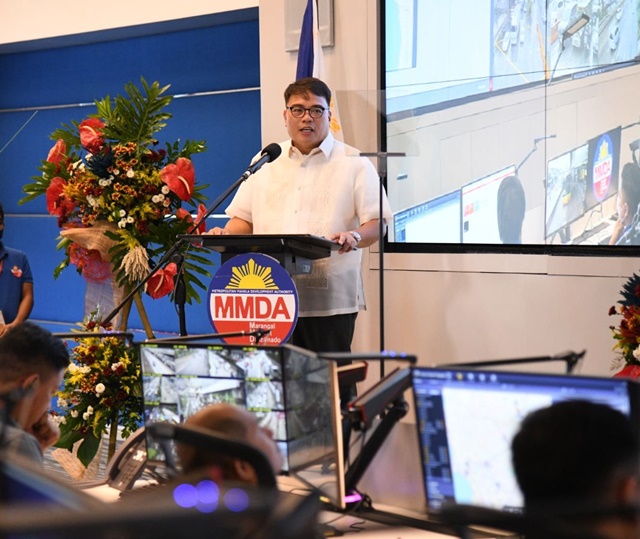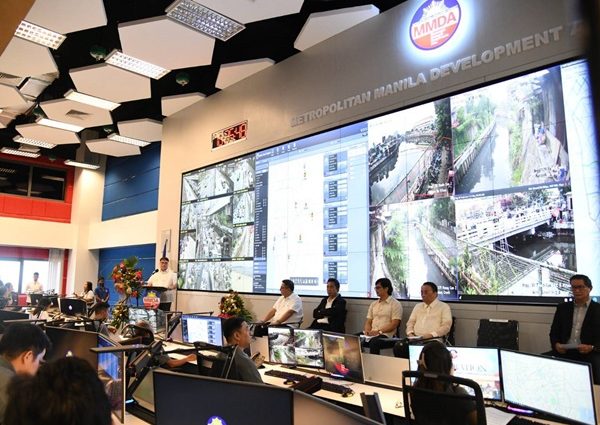THE plan to make Metro Manila a “smart city” got a big boost with the launch of the Metropolitan Manila Development Authority (MMDA) Communications and Command Center (CCC).
MMDA Acting Chairman Atty. Don Artes said the P300-million MMDA CCC is the biggest, most advanced, and yet is the most cost-effective command center in the country and is considered a major step towards realizing its vision to make Metro Manila a safe and smart metropolis.

The MMDA CCC is located at the MMDA’s Building for Ecologically Responsive Design Excellence or BERDE-accredited new head office in Pasig City. It will serve as the “nerve center of Metro Manila’s major thoroughfares” and will house state-of-the-art facilities including operations center, data center, situation room, viewing room, media room, and power room as well as new technologies such as high-definition closed circuit television cameras, intelligent traffic signalization system, and Hytera radio smart dispatch system with built-in global positioning system (GPS).
“This is a major step for MMDA to make Metro Manila a safe and smart metropolis by using smart technologies and data analytics to aid the country into its economic development and strengthened security,” Artes said during the inauguration ceremony that was attended by Executive Secretary Lucas Bersamin, Metro Manila mayors, other top Cabinet members and elected officials.
“In line with President Ferdinand Marcos Jr.’s push for digitalization for government services, this would help the public through faster and more synchronized road emergency response, disaster response, traffic management, flood management, crisis management, and public safety, in coordination with other national government agencies and 17 Metro Manila local government units (LGUs).”
The Operations Center has an ergonomic console system and is environmentally designed wherein ambient noise levels are controlled. It also has a video wall system up for expansion to accommodate flood control monitoring for Flood Control Information Center (FCIC) Effective Flood Control Operation System (EFCOS) and video feed for body-worn cameras to be used by MMDA traffic enforcers.
The Data Center, meanwhile, is a centralized location where information and communications technology equipment is concentrated. It can accommodate 25 server racks in the future.
Leaders and decision-makers can also convene in the MMDA CCC Situation Room in case a major incident, either man-made or natural disaster, happened. Activation of the Metro Manila Disaster Risk Reduction and Management Council (MMDRRMC) shall occur if there is an incident involving two or more cities.
The MMDA CCC will monitor 403 high-tech CCTV cameras installed across critical and major infrastructure projects in the metro (including MMDA pumping stations, bus bays, waterways, Manila Baywalk Dolomite Beach) and adaptive and sensor-based traffic lights — both linked through the fiber optic network owned by the agency. Currently, the agency is installing 638 CCTV cameras along major thoroughfares in the National Capital Region as well as 166 more CCTVs with data analytics connected along the EDSA Bus Carousel.
The agency has laid 899,239 meters of fiber optics across Metro Manila and is currently laying an additional 105,360 meters, the longest fiber optic cable network owned by a government agency.
On the other hand, remote controlling and programming of the intelligent traffic signalization system which features adaptive and sensor-based traffic lights shall also be done in the MMDA CCC.
Another new technology in the MMDA CCC is the Hytera Radio Smart Dispatch System – a dispatch software with built-in GPS and smart map to locate traffic enforcers real-time and to communicate with other radio users to relay important messages in the field should there be a need to relay an instruction or when an emergency situation occurs.
Artes said the inauguration of the MMDA CCC is just the beginning as the agency continues to develop ICT projects for the benefit of Metro Manila residents.
Among the MMDA’s future plans include the installation of a 45-kilometer fiber optic cable to be able to integrate NCR LGUs’ CCTVs, and procurement of artificial intelligence with vehicle classification, car counter, license plate, and facial recognition.
License plate recognition features of the AI program will be used by MMDA for traffic enforcement and management while the facial recognition and behavioral analytics will be used by the Department of Interior and Local Government for crime prevention and resolution.
The agency will likewise procure a mobile command center with its own satellite internet and remote CCTV capabilities to monitor significant events such as the President’s annual State of the Nation Address, or even calamities.
Aside from the technologies housed in the MMDA CCC, the MMDA also procured handheld ticketing devices which can issue and reprint traffic citation tickets, request vehicle towing, and accept online payment in support of the agency’s interconnectivity with the Land Transportation Office for the implementation of the Single Ticketing System.
“With these technologies and facilities pooled into our command center, kumpiyansa po akong mas inclusive at tiyak na mas maaasahan ang ating bagong MMDA CCC,” he said.
“Lahat po ito ay naka-angkla sa ating sinumpaang tungkulin na magbigay ng epektibo at episyenteng serbisyo publiko tungo sa mas maunlad at mas progresibong Metro Manila,” Artes concluded.
(PHOTO CREDIT: MMDA PIO)

